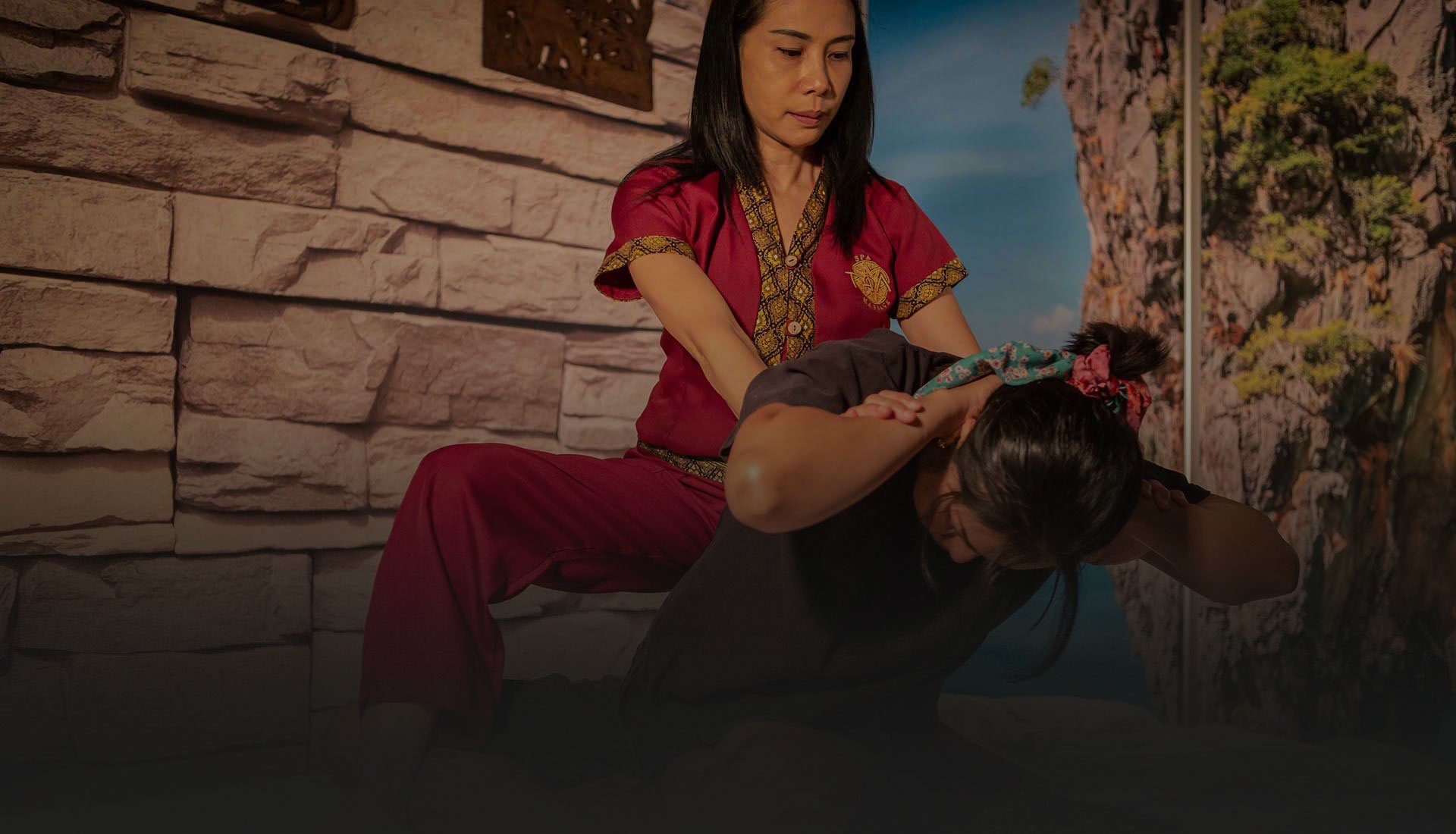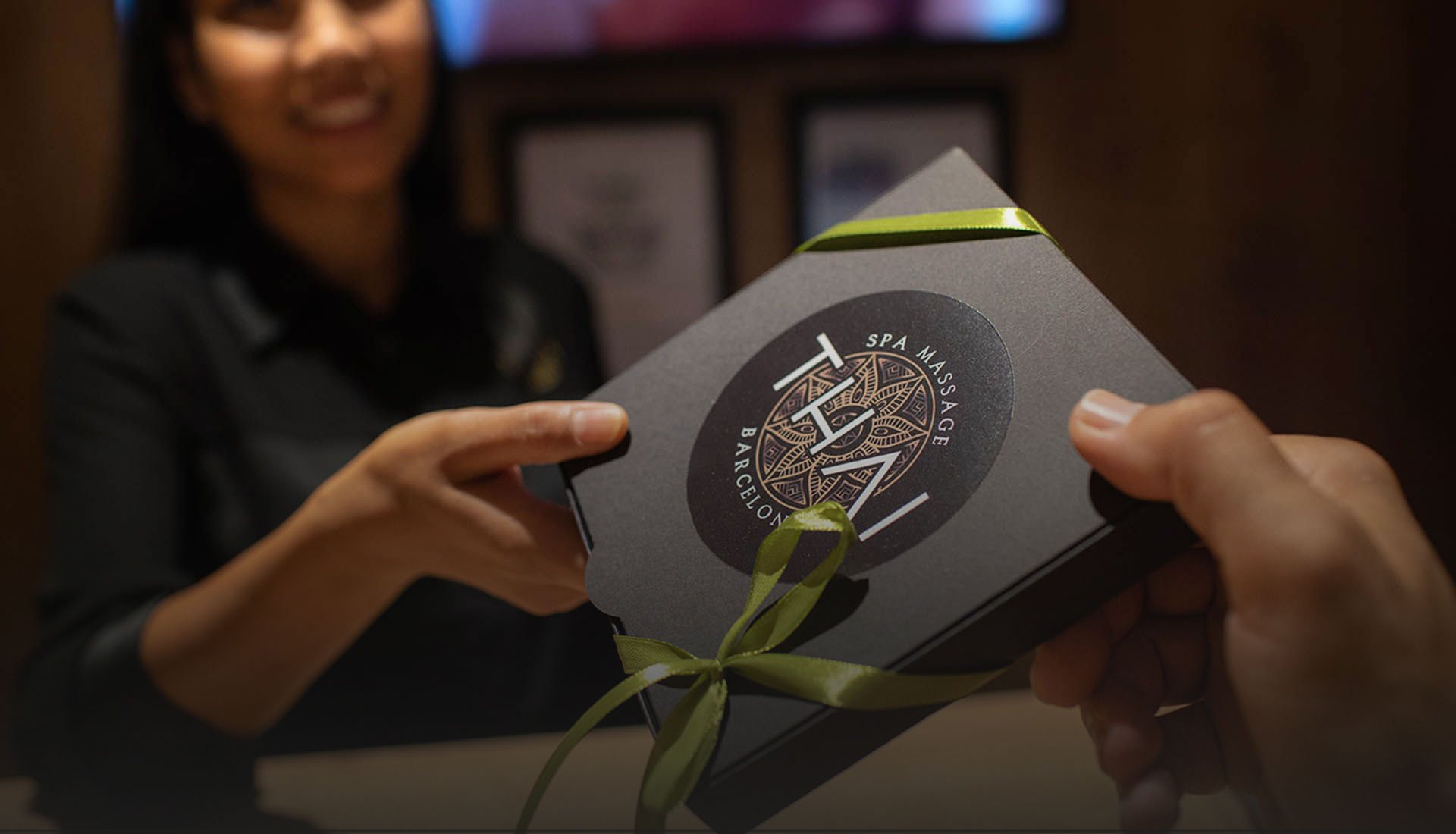“El arte de las ocho extremidades” destaca como una de las disciplinas más veneradas y completas, y está de moda, pero sus raíces se encuentran en la rica historia de Tailandia.
What is Muay Thai?
Muay Thai, also known as Thai boxing or the art of 8 limbs, is a fascinating Thai martial art. This discipline stands out for the use of fists, feet, elbows and knees, becoming an extremely complete and effective form of combat. A key difference between Muay Thai and many other combat sports is its emphasis on traditional elements such as the pre-fight dance ritual known as Wai Kru Ram Muay, the headdress (Mongkon) and the Sarama music, which accompanies each fight.
If you are considering entering the world of martial arts, Muay Thai (or thai boxing ) will not only provide you with an excellent way to Physical training and its movements are so useful that many have been incorporated into mixed martial arts, due to its efficiency and agility.

An epic origin
![]()
The beginnings of Muay Thai date back to the dawn of Thai history, when tribes and indigenous peoples engaged in hand-to-hand combat to protect themselves and preserve their territory. These primitive forms of combat gradually developed and, through ritualization, became an essential part of the culture of the area. But we find the first documentation of thai boxing in the country’s Sukhothai dynasty, dating back to roughly the 13th century.
According to Thailand’s historical records, with the birth of the first Thai army, it arose from the need to protect the kingdom, and soldiers were taught to fight both with and without weapons. Over time, this form of combat evolved and gave rise to Muay Boran and Muay Thai, as we know them today. Due to constant wars with neighboring kingdoms and tribes over the centuries, these disciplines became a way of life for the people of Siam, as Thailand used to be called.
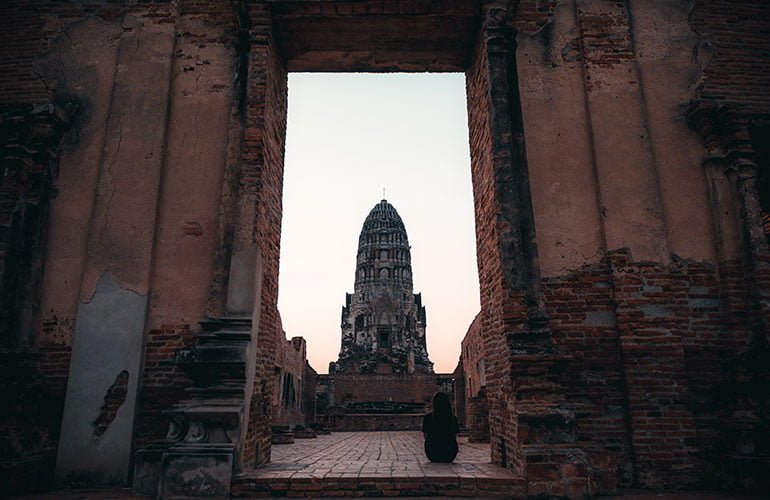
Una mujer sentada sola en un antiguo templo de Ayutthaya, Tailandia
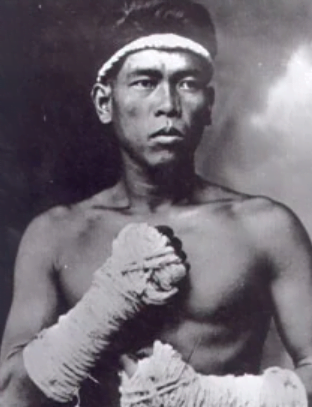
One of the most famous stories of Muay Thai is related to the courageous Nai Khanom Tom, during the Ayutthaya period. His image has become popular for his fearlessness, resilience, and strength as a warrior. Nai Khanom Tom is said to have defeated nine Burmese fighters, one after another, while imprisoned after the kingdom of Siam was under siege. This historic event, though shrouded in myth, is now celebrated as Muay Thai Day, which is commemorated annually on March 17.
During the era of the Rattanakosin Kingdom, which spanned from the 18th century to the early 20th century, this martial art officially acquired the status of a national sport, and regulations were introduced, the classes of Muay Thai regulated and the rules for its practice that we know today.
Muay Thai Day is not a public holiday in the country, but we hold commemorative events in various stadiums and training academies: and it is a very important day for the city of Ayutthaya, the home of the legendary figure of Nai Khanom Tom.
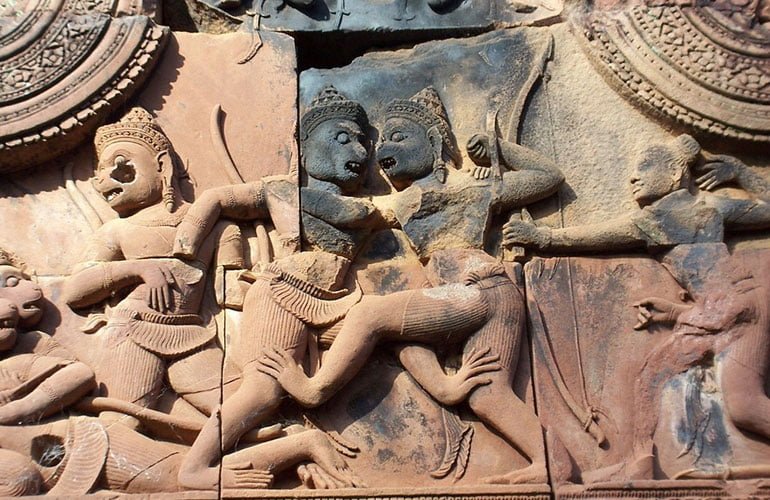
An expanding martial art
![]()
Throughout the centuries, Thailand, influenced by different invasions, migratory movements and trade with other nations, developed new combat techniques that merged with indigenous fighting styles, thus enriching this art. The most notable influence came from Burmese soldiers who introduced the martial art known as “Lethwei”, characterized by the use of fists, elbows and knees.
During the reign of King Naresuan (1590-1605), Muay Thai underwent significant development as a national sport. Under the king’s support, this martial art began to flourish as an organized discipline, thai boxing matches became prominent events at festivals and royal ceremonies, and its popularity continued to grow.

Muay Boran durante el reinado del rey Chulalongkorn
When did Muay Thai become a national sport?
![]()
During the time of the Rattanakosin kingdom, between the 18th and early 20th centuries, the first regulations were created and Muay Thai formally became a national sport.
In 1921, the first thai boxing ring was established and the use of gloves to protect the hands was implemented. Likewise, weight categories were created to equalize the fights and more advanced training techniques were adopted. In recent decades, this system has transcended the borders of Thailand, becoming a popular sport worldwide, thanks to organizations such as the World Muay Thai Council.
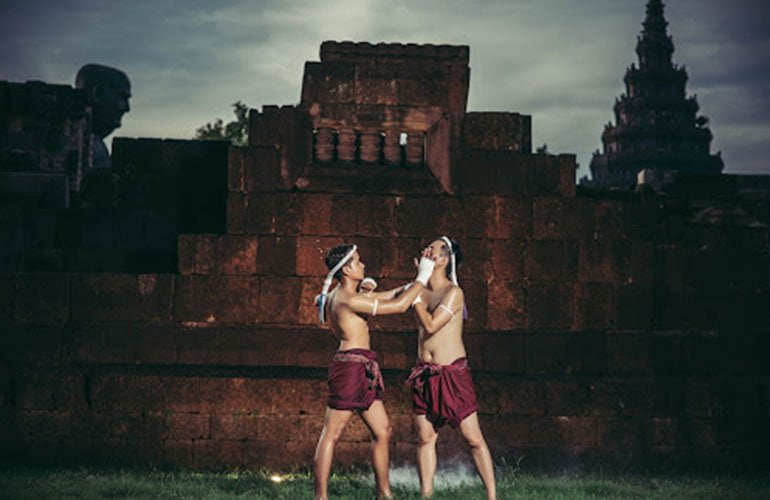
The movements of Muay Thai
![]()
Muay Thai is known for its wide repertoire of movements and techniques, which combine punches, kicks, knees, and elbows. They have their own name that represents their style. The combination and fluidity of these movements, along with the strategy and technique of this martial art, are essential for practitioners of this sport.
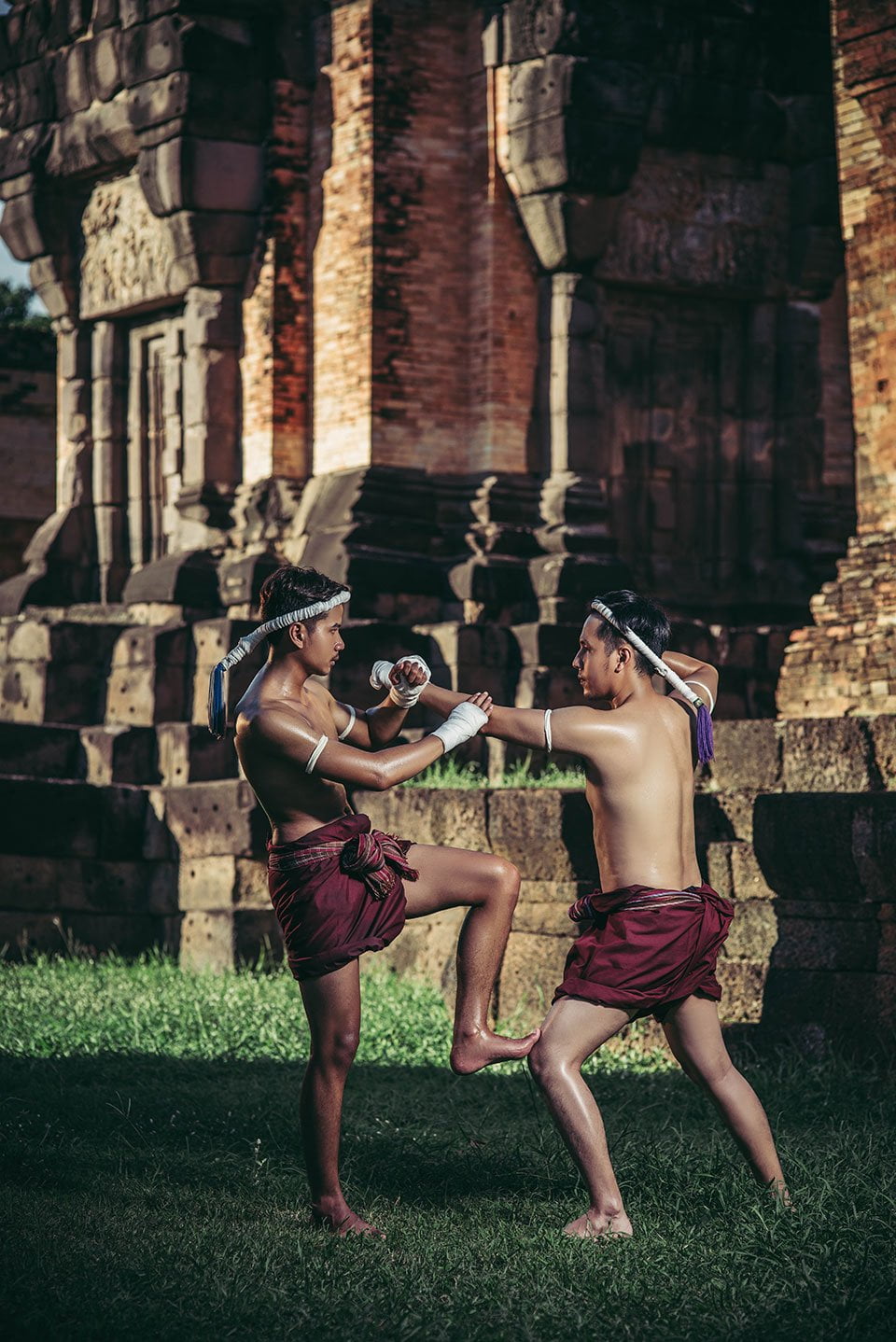
Jab: A straight punch thrown with the front fist.
Cross: A straight punch thrown with the rear fist, generating more power than the jab.
Hook: A circular blow thrown with the arm in the shape of a hook, directed towards the opponent’s side.
Upper cut: an upward punch thrown from the bottom up with the fist, directed towards the opponent’s chin.
Teep Kick: A kick delivered with the front leg, usually aimed at the opponent’s torso to keep them at a distance.
Roundhouse kick: A kick delivered with the supporting leg that travels in a circular arc to the opponent’s side.
Low kick: A kick directed at the opponent’s legs, especially the thighs, with the aim of weakening their core and balance.
Knee strike: a strike delivered with the knee, which can be thrown towards the opponent’s body or head when they are at close range.
Elbow strike: A powerful strike delivered with the elbow, used primarily at close range to deal significant damage to the opponent.
Clinch: a grappling technique used to control the opponent, where wrestlers grab each other and look to throw knees, elbow strikes, and sweeps.
The word muay, which translates as “combat”, “fight” or “boxing”, comes from the Sanskrit Mavya which means “to unite”, and this tradition unites all Thais as fans of a unique style of martial arts —and so much ours— that we always want to share and celebrate in festivities like Thailand Day this June.




